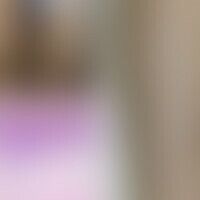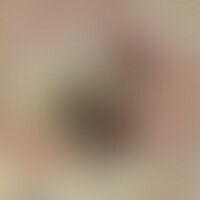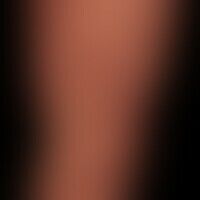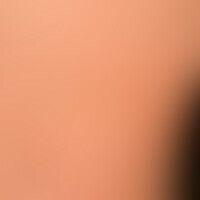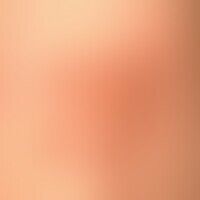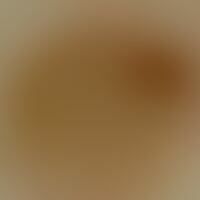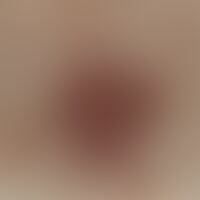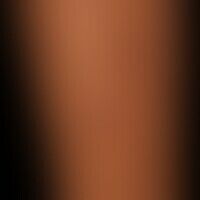Image diagnoses for "Leg/Foot"
395 results with 1158 images
Results forLeg/Foot

Pemphigoid bullous L12.0
Pemphigoid, bullous. detail: 1-6 mm large, tightly stretched blisters filled with clear secretion, which appeared on reddened skin in a 68-year-old woman. Smaller blisters burst selectively, the remaining residual erosions are partly crusty.

Neurofibromatosis (overview) Q85.0
Type I Neurofibromatosis, peripheral type or classic cutaneous form.

Primary cutaneous diffuse large cell b-cell lymphoma leg type C83.3
Primary cutaneous diffuse large cell B-cell lymphoma leg type: since 6 months existing, steadily growing, not painful conglomerate, moderately consistency increased red surface smooth nodule, no systemic involvement proven, therapy: excision.

Hyperpigmentation caloric L81.8
Hyperpigmentation caloric: Net-like hyperpigmentation caused by regular application of heat. No complaints.

Intermediate leprosy A30.8
Dimorphic leprosy of the lepromatous type: borderline leprosy of the lepromatous type with multiple, large, plate-like, borderline inflammatory lesions (type I leprosy reaction).

Papillomatosis cutis lymphostatica I89.0
Papillomatosis cutis lymphostatica: Initial findings with flat keratotic deposits.

Hypertrophic Lichen planus L43.81
Lichen planus verrucosus: Plaques on the left lower leg that have been unchanged for years and are very itchy (see scratching effects), with a red-violet seam in the marginal parts of the plaques.

Psoriasis palmaris et plantaris (overview) L40.3
Psoriasis palmo-plantaris: extensive desquamation of the sole of the foot.
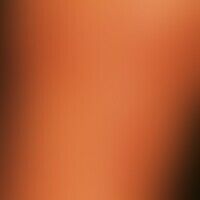
Folliculitis superficial L01.0
Ostiofolliculitis. Multiple follicular pustules. Evidence of Staph. aureus.

Granuloma anulare disseminatum L92.0
Granuloma anulare disseminatum: non-painful, non-itching, disseminated, large-area plaques that appeared on the trunk and extremities of a 52-year-old patient. No diabetes mellitus. No other systemic diseases known.

Asteatotic dermatitis L30.8
Desiccation dermatitis: Characteristic craquelée pattern with the diamond-shaped demarcation of the skin, the line pattern is created by the linear breaking up of the skin.
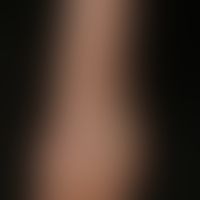
Neurofibromatosis (overview) Q85.0
Type I Neurofibromatosis, peripheral type or classic cutaneous form, numerous soft cutaneous and subcutaneous nodules.

